For stunning gram-stained bacteria photos, master proper staining timing with crystal violet and safranin for vibrant contrast. Start with 40x objective before switching to 100x oil immersion. Use proper lighting and adjust condenser settings to highlight bacterial morphology. Keep your microscope calibrated and lenses clean. Photograph immediately after staining while colors are fresh. Set your camera to low ISO with medium aperture. These techniques will transform your microbial imagery from basic to breathtaking.
7 Tips For Stunning Gram-Stained Bacteria Photos
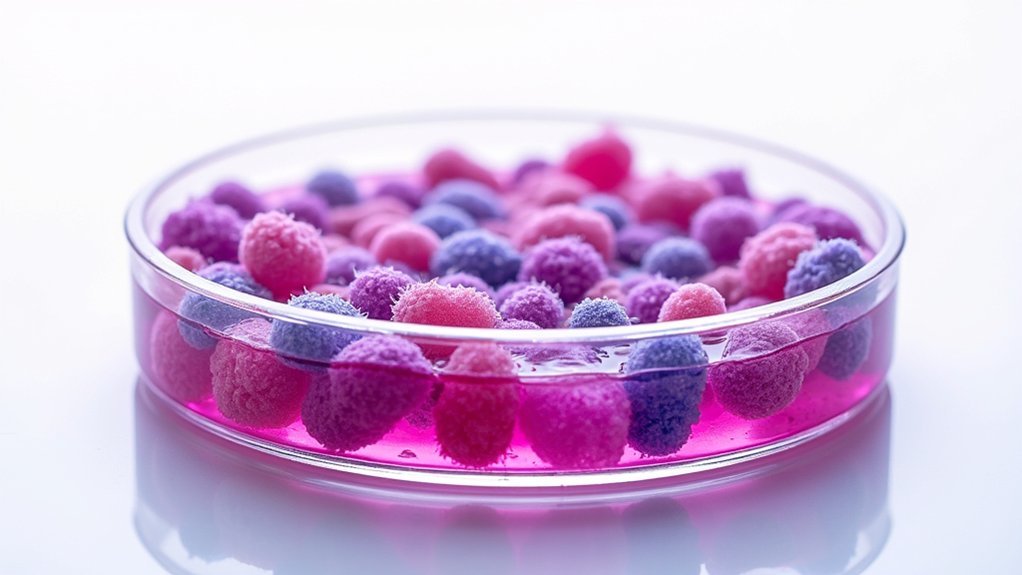
When capturing the microscopic world of bacteria, proper technique makes all the difference between mediocre and stunning photographs. Start with proper lighting and a 40x objective lens, then switch to 100x oil immersion for crystal-clear resolution that reveals details of the plasma membrane and cellular structures.
Photograph your specimens immediately after staining to showcase the vibrant contrast between blue-purple Gram-positive and pink-red Gram-negative bacteria. Use spotlessly clean slides to eliminate distracting background interference.
Experiment with your camera’s contrast settings to enhance the visual distinction between bacterial types. Try different focal planes to highlight unique morphological features—whether spherical cocci, elongated rods, or spiral shapes.
These adjustments will transform ordinary microscope views into fascinating scientific imagery worth sharing.
Master the Perfect Staining Technique for Vibrant Contrast
Although capturing stunning bacterial photos depends on good equipment, the staining technique itself remains the true cornerstone of microscopic photography.
Equipment matters, but mastering the stain transforms bacterial photography from mere documentation into art.
Begin by properly fixing your sample through air drying followed by a two-minute methanol bath to preserve cell structure and enhance contrast.
Time each staining step precisely—Crystal Violet needs exactly one minute for ideal Gram-positive retention. When applying Decolorizer, use a drop-wise technique and stop immediately when the runoff clears to prevent over-decolorizing your Gram-positive cells.
Counterstain with Safranin for one minute to achieve that striking pink-red in Gram-negative bacteria.
For viewing, start with the 40x high dry objective before moving to the 100x oil immersion lens. This creates a 1,000x final magnification that reveals stunning bacterial detail and maximizes the color contrast you’ve worked to achieve.
Optimize Microscope Settings for Crystal-Clear Resolution
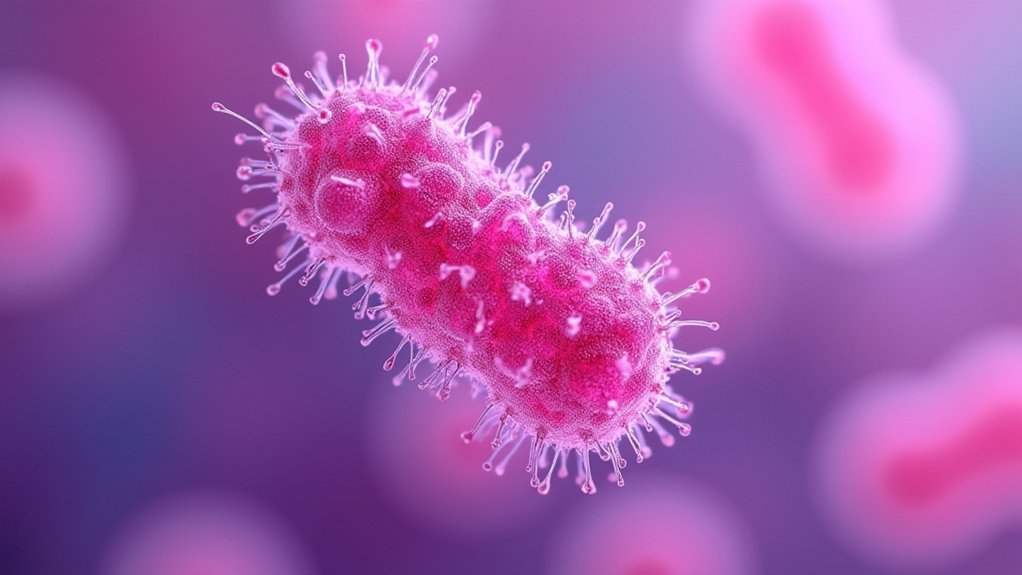
Three critical adjustments separate ordinary bacterial images from publication-worthy micrographs.
Begin with proper lens selection—start with the 40x objective for initial focusing before switching to the 100x oil immersion lens to achieve that impressive 1,000x total magnification where bacterial morphology truly shines.
Next, perfect your lighting.
Adjust your microscope’s light source carefully; too bright washes out subtle details, while insufficient illumination obscures critical features in your Gram-stained specimens. Fine-tune the condenser and diaphragm settings to enhance contrast between violet Gram-positive and pink Gram-negative organisms.
Finally, maintain a pristine viewing system.
Regularly clean your lenses and slides to prevent artifacts that can ruin otherwise perfect images. A well-calibrated, clean microscope is non-negotiable for capturing the intricate structural details that make bacterial micrographs truly stunning.
Proper Oil Immersion Techniques for Maximum Magnification
Mastering oil immersion technique stands as the cornerstone of high-quality bacterial microscopy. Proper handling of your oil immersion lens will dramatically improve your Gram-stain visualization and photography results.
Before diving into oil immersion, focus your specimen using the high dry objective first. This gives you a clear starting point and makes the shift to higher magnification much smoother.
- Inspect your oil immersion lens for cleanliness – even tiny smudges can ruin your perfect bacterial portrait.
- Apply just one small drop of immersion oil directly to your slide – too much creates messy backgrounds.
- Rotate the nosepiece gently until it clicks into place – forcing can destroy both your lens and specimen.
- Clean your lens thoroughly after each session – neglect leads to permanent damage and degraded images.
Advanced Lighting Strategies to Highlight Bacterial Morphology
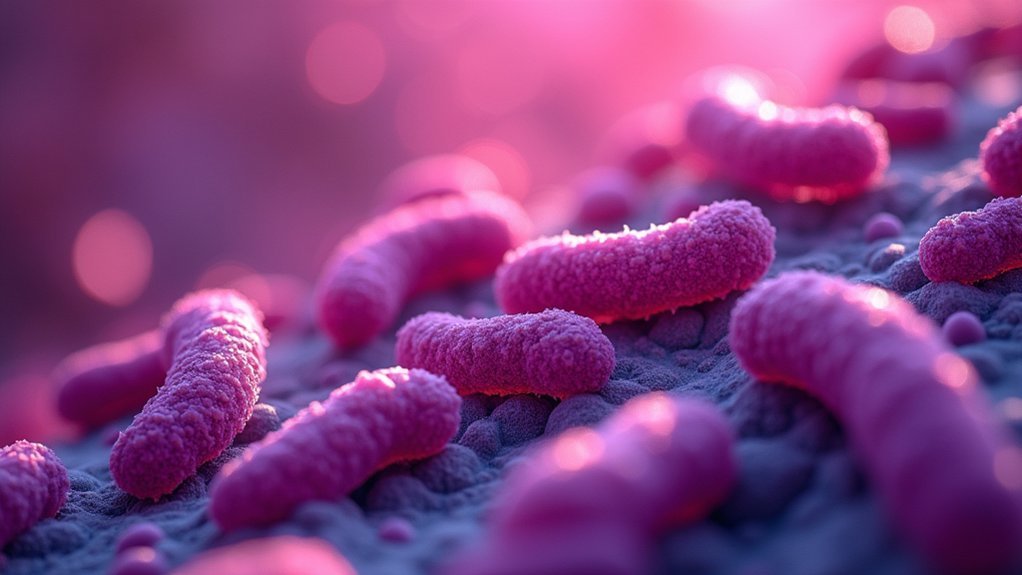
Perfect lighting transforms ordinary bacterial specimens into striking visual revelations that showcase every cellular detail.
When capturing gram-stained bacteria, adjust your microscope’s light intensity to maximize contrast between blue-purple gram-positive and pink-red gram-negative cells. This simple adjustment dramatically enhances cellular structure visibility.
Don’t hesitate to experiment with oblique lighting angles to create subtle shadows that accentuate the three-dimensional qualities of cocci and bacilli. These shadows reveal morphological nuances that standard lighting often misses.
For publication-quality images, incorporate a color-corrected light source to guarantee accurate representation of gram stain colors. This precision is vital for both educational and diagnostic purposes.
When combined with your high-resolution camera and 100x oil immersion objective, these lighting techniques will transform your bacterial photography from merely informative to truly spectacular.
Camera Settings and Equipment for Microscopic Photography
While capturing the vibrant hues of gram-stained bacteria requires skill, the right equipment and settings make all the difference in producing museum-quality images.
Select a camera with a high-resolution sensor to reveal intricate bacterial structures that might otherwise remain invisible.
For ideal results:
- Set your aperture between f/8 and f/11 to achieve better depth of field, keeping more bacterial cells in sharp focus simultaneously.
- Keep your ISO low (100-200) to minimize digital noise and preserve the crisp distinction between purple Gram-positive and pink Gram-negative organisms.
- Always mount your camera on a stable tripod to eliminate vibration blur, especially critical at high magnifications.
- Fine-tune your white balance settings to accurately reproduce the characteristic Gram stain colors that microbiologists rely on for identification.
Background Preparation and Slide Cleanliness for Professional Results
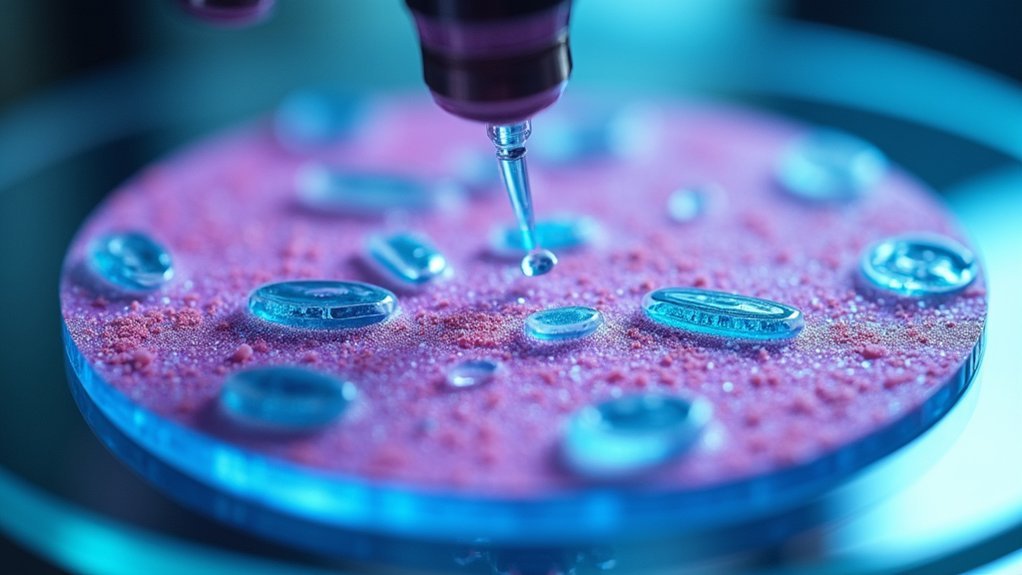
The difference between amateur and professional-quality bacterial photography often hinges on meticulous slide preparation. You’ll need to thoroughly clean your glass slides, eliminating even microscopic residues that can create distracting artifacts in your final images.
Always use a sterile loop when transferring cells to maintain sample purity and prevent cross-contamination. Allow your samples to air dry completely before methanol fixation—any remaining moisture will distort your results.
Cross-contamination compromises bacterial photography. Use sterile loops and ensure complete drying before fixation.
For consistent, professional backgrounds, position your slides on neutral-colored surfaces that won’t compete with your subject. Avoid bright or distracting elements that draw attention away from the bacteria.
When viewing through your microscope, carefully center your area of interest with proper illumination to capture the intricate details of Gram-stained structures.
Frequently Asked Questions
What Are Three Common Mistakes in Gram Staining?
You’ll make three common gram staining mistakes by inadequately fixing samples (causing cell lysis), over-decolorizing with the Decolorizer, and using incorrect timing for each staining step, especially with Crystal Violet and Safranin.
What Does a Good Gram Stain Look Like?
A good Gram stain shows clear contrast: Gram-positive bacteria appear dark purple and Gram-negative bacteria appear pink. You’ll see distinct bacterial morphology against a clean background with no debris or artifacts.
How to Get Better at Gram Staining?
To get better at gram staining, practice consistent technique, control timing carefully, master decolorization, and review your stains under proper magnification. You’ll improve with repetition and by analyzing your results critically.
What Is the Most Important Challenge Step in the Gram Stain?
Decolorization is your biggest challenge in Gram staining. You’ll need to apply just enough Decolorizer without over-doing it. Watch closely and rinse immediately when the violet color stops running to guarantee accurate bacterial identification.
In Summary
You’ve now got all the tools to capture breathtaking gram-stained bacteria photos. Remember, it’s the small details that make a big difference – from your staining technique to your camera settings. With practice, you’ll develop an eye for microscopic composition that’ll impress your colleagues. Don’t be afraid to experiment with different lighting and backgrounds. Your next bacterial masterpiece is just a slide away!

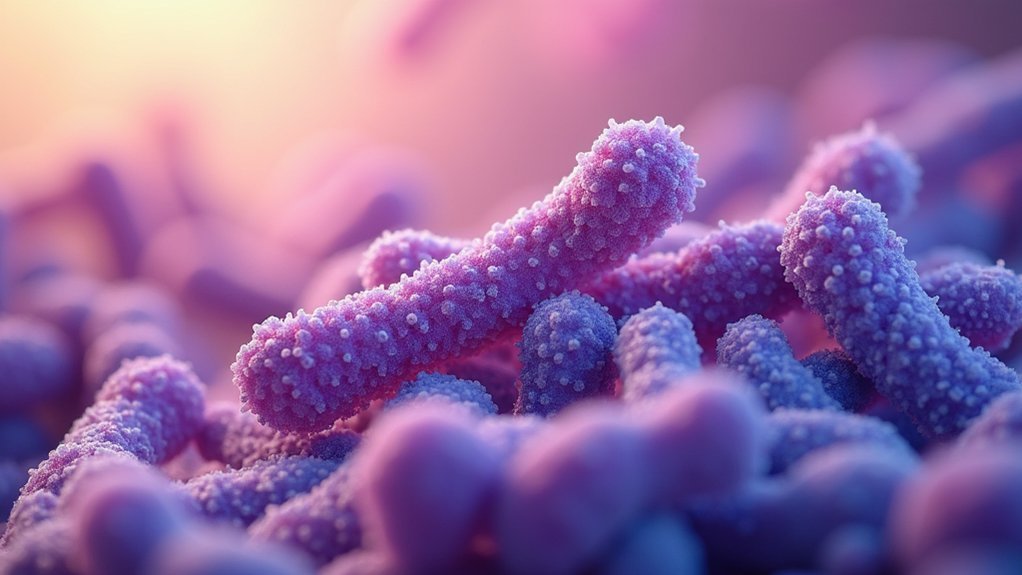



Leave a Reply